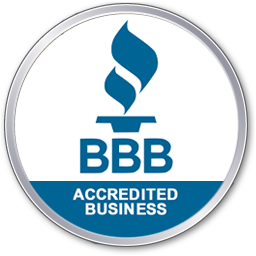If you recently had your home or business tested for radon and uncovered elevated levels of the gas inside your building, chances are you were told you’d need to have radon mitigation performed. The results may have left you with questions like:
- What exactly is radon gas?
- How does radon mitigation work?
- Is radon mitigation something I can do myself?
- How much is radon mitigation going to cost me?
Radon is a naturally occurring gas that is produced by the decay of radioactive metals such as uranium and radium. These metals can be found in rocks, soil and even water, which means it’s likely that you are exposed to small amounts of radon every day. Radon gas becomes a problem, however, when it gets trapped inside a building and leads to an elevated concentration.
The U.S. Environmental Protection Agency (EPA) and the U.S. Surgeon General recommend testing your home or business for radon every two years or after any renovations. If the test reveals your radon level is 4 picocuries per liter (pCi/L) or higher, radon mitigation is necessary to avoid any risks associated with elevated radon exposure.
Unfortunately, much of Oregon is at higher risk of having elevated radon levels than other parts of the country. The national average indoor radon concentration is 1.3 pCi/L, and Oregon’s average radon level checks in at 3.1 pCi/L. This is due to the high volume of uranium that’s found in the state’s geological features. Some parts of the state, including the Portland area, also have a higher risk than others.
If your radon test uncovered elevated radon gas levels in your home or business, don’t panic. It’s estimated that roughly one in 15 homes in the U.S. have elevated levels of radon. Radon mitigation systems can lower your radon levels to a safe amount, and installation can be affordable. Even if your radon levels are below the EPA’s safety threshold, there are still ways you can reduce radon to help avoid elevated levels in the future.
Here, we’ll cover what radon mitigation entails and the various methods that may be used to help protect you and your family.
Radon Mitigation Methods
Radon mitigation (also known as radon abatement) refers to any process that is used to lower radon concentration levels within a structure. While it is unrealistic to fully remove radon, there are methods to reduce it. This typically involves installing a radon mitigation system to either reduce existing radon or prevent additional radon gas from entering.
Radon mitigation is not a one-size-fits-all solution. There are a variety of effective methods that may be used, and the type of system that’s right for you will depend on the characteristics of your property. Radon mitigation is often based on the type of foundation your home or office building has, which may be:
- A basement
- A crawl space
- A concrete slab
If a home has a combination of different foundation types, such as a basement under part of the house with a slab-on-grade under the rest, a combination of radon mitigation methods may be necessary to effectively reduce radon gas to safe levels.
To identify the best radon mitigation system for your situation, the mitigation process starts with an inspection by a certified professional. This inspection may be visual or involve diagnostic tests to design the most effective system for your home. It is helpful if you can provide your contractor with information on your home, including its design and the types of materials that exist beneath it, to ensure the radon mitigation system’s design is developed accordingly.
Sub-Slab Depressurization
Sub-slab depressurization (also known as sub-slab suction) is a radon mitigation method that only applies to properties with a basement. Sub-slab depressurization is the most common type of radon mitigation system and often the most effective.
The system reduces radon levels by preventing the intrusion of radon gas that is coming up from the soil underneath a building.
How It Works
Sub-slab depressurization systems are installed first by drilling a hole into the building’s concrete slab. Piping is then entered through the hole to draw in and collect radon gas from the soil directly beneath the building. This can be done either passively or by using a fan to create a vacuum effect beneath the slab.
Once the piping is inserted, the connection point is sealed to prevent gas from escaping, and the radon gas that is collected is redirected outside, typically through a vent that leads to the roof and terminates above the roofline.
After it’s installed, a sub-slab depressurization system should be continually monitored for efficiency.
Sub-Membrane Depressurization
Sub-membrane depressurization is a radon mitigation system that’s similar to sub-slab depressurization but is used for buildings that have a crawl space. If your home or office has both a basement and a crawl space, sub-membrane depressurization will likely need to be combined with a sub-slab depressurization system.
How It Works
The first step in installing a sub-membrane depressurization system is to encapsulate your crawl space, which is a good thing to do in itself. Crawl space encapsulation involves sealing off the entire space, which may include adding:
- A plastic liner to create a moisture barrier on the floor.
- A dehumidifier.
- Insulation for the walls.
- Sealed foundation vents.
All of these additions help keep moisture out of your crawl space, which can help avoid additional problems like mold growth.
Once the crawl space is sealed, a vent pipe is fed from beneath the encapsulation to redirect radon gas back outside. Just like sub-slab depressurization, sub-membrane depressurization systems can be used passively or with a fan to suck radon gas in.
Drain Tile Depressurization
Drain tile depressurization systems are similar to sub-slab and sub-membrane depressurization systems. However, instead of drilling a hole into the concrete slab, an existing drainage system is used to pull radon from beneath the slab.
How It Works
Drain tile depressurization works best when drain tiles are looped around the building’s basement to help keep it dry. The system’s suction point is located at a drain tile to pull in radon from beneath the building. The system then reduces radon in the same way water is drained through the tiles, and radon gas is channeled away from the home.
Block Wall Suction
Block wall suction is another depressurization technique that is used on homes with hollow foundation walls to reduce radon gas from the ground before it can penetrate the foundation.
How It Works
Block wall suction uses a fan and ductwork to suck in radon gas from hollow spaces behind block foundation walls before it can enter the building. These systems may also blow air into the walls to prevent radon gas from entering behind the foundation walls in the first place.
Reduce Radon from Your Portland Home or Business
Radon mitigation may sound daunting, but it can actually be fairly easy and affordable. Radon mitigation should always be done by experienced environmental services professionals who have the right training and necessary certifications to properly install these systems. This helps to ensure the right type of system is installed in your home or office, that it’s working properly and that it’s up to code.
The team at Alpha Environmental consists of radon mitigation experts who can help walk you through the process. Contact us online or call us at 503-292-5346 to schedule a free radon mitigation estimate today.




